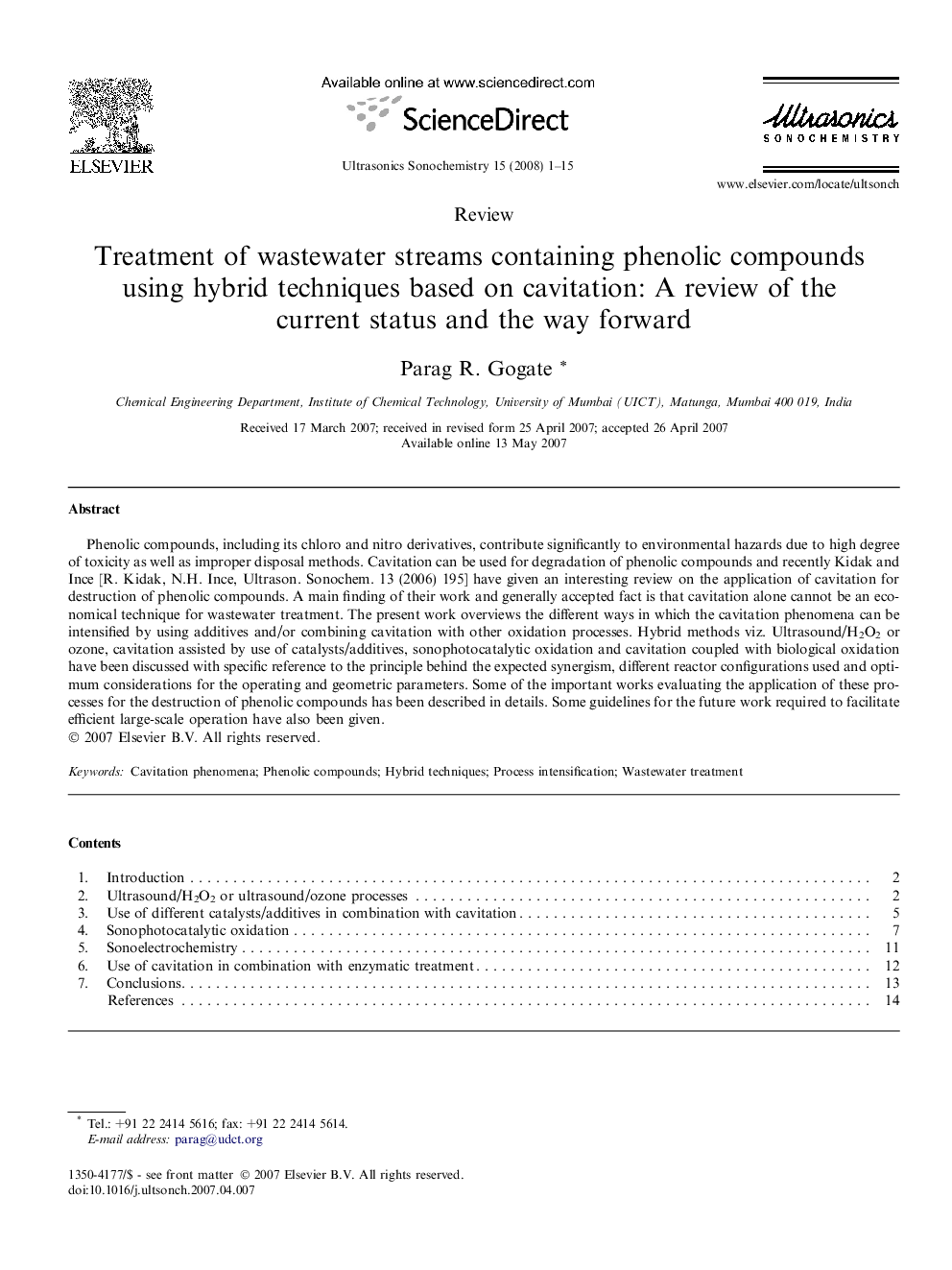| Article ID | Journal | Published Year | Pages | File Type |
|---|---|---|---|---|
| 1270997 | Ultrasonics Sonochemistry | 2008 | 15 Pages |
Phenolic compounds, including its chloro and nitro derivatives, contribute significantly to environmental hazards due to high degree of toxicity as well as improper disposal methods. Cavitation can be used for degradation of phenolic compounds and recently Kidak and Ince [R. Kidak, N.H. Ince, Ultrason. Sonochem. 13 (2006) 195] have given an interesting review on the application of cavitation for destruction of phenolic compounds. A main finding of their work and generally accepted fact is that cavitation alone cannot be an economical technique for wastewater treatment. The present work overviews the different ways in which the cavitation phenomena can be intensified by using additives and/or combining cavitation with other oxidation processes. Hybrid methods viz. Ultrasound/H2O2 or ozone, cavitation assisted by use of catalysts/additives, sonophotocatalytic oxidation and cavitation coupled with biological oxidation have been discussed with specific reference to the principle behind the expected synergism, different reactor configurations used and optimum considerations for the operating and geometric parameters. Some of the important works evaluating the application of these processes for the destruction of phenolic compounds has been described in details. Some guidelines for the future work required to facilitate efficient large-scale operation have also been given.
